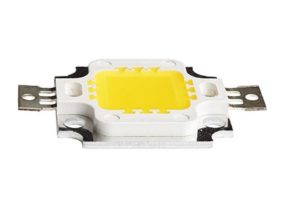Platinum Metals: A Lightbulb Moment
Posted:
The Platinum Group Metals’ unique properties make them crucial in many industrial processes – often due to a chance discovery
The Platinum Group Metals (PGMs) – platinum, palladium, rhodium, ruthenium, iridium and osmium – are a family of six individual elements that are chemically, physically and anatomically similar. They have unique properties and are used in many industrial processes – making, for example, auto-components, electronics, fertilizer and glass – as well as in medical treatments.
Scientists began to identify PGMs as individual metals during the early 19th century, and some of their most significant applications were only discovered as a result of notable ‘light bulb moments’.
For example, a PGM alloy is used as a catalyst to make nitric acid, a key component of fertilizer, in a chemical reaction known as ‘the Ostwald process’ after the pioneering work of Nobel Prize-winning chemist Wilhelm Ostwald in 1901.
By identifying platinum’s catalytic properties when converting ammonia to nitric acid, Ostwald paved the way for the modern, large-scale production of fertilizer which today uses a platinum-rhodium gauze to make the process more efficient and effective. Around 90 per cent of nitrogen manufactured with this gauze goes towards producing the c.190m tonnes of fertilizer nutrients used each year.
Platinum also has cancer-fighting properties that were discovered by accident in the 1960s, when Cisplatin, a widely used anti-cancer drug, was inadvertently produced during experiments into the effect of electric fields on bacterial growth.
From light bulb moments to LEDs

A high-intensity, low-energy chip on board LED
Such is their versatility, PGMs are also used to make crucibles – they provide the necessary high melting point, mechanical strength and resistance to chemical attack. Crucibles are cylindrical utensils for growing a variety of crystals by pulling a single crystal from a pool of molten salts. There are five main types of crystal grown using crucibles, with applications ranging from lasers to electronic components.
In fact, iridium crucibles are used to grow sapphire crystals to make light-emitting diodes (LEDs), tiny light bulbs that fit easily into an electric circuit. LEDs have no filament and last far longer than ordinary incandescent bulbs, which ‘burn out’ in months rather than years.
LED light bulbs have enabled many new technological advances over the last twenty years including backlighting for mobile phone displays and flat screen televisions.
Posted with permission of World Platinum Investment Council. As of June 18, 2019.


